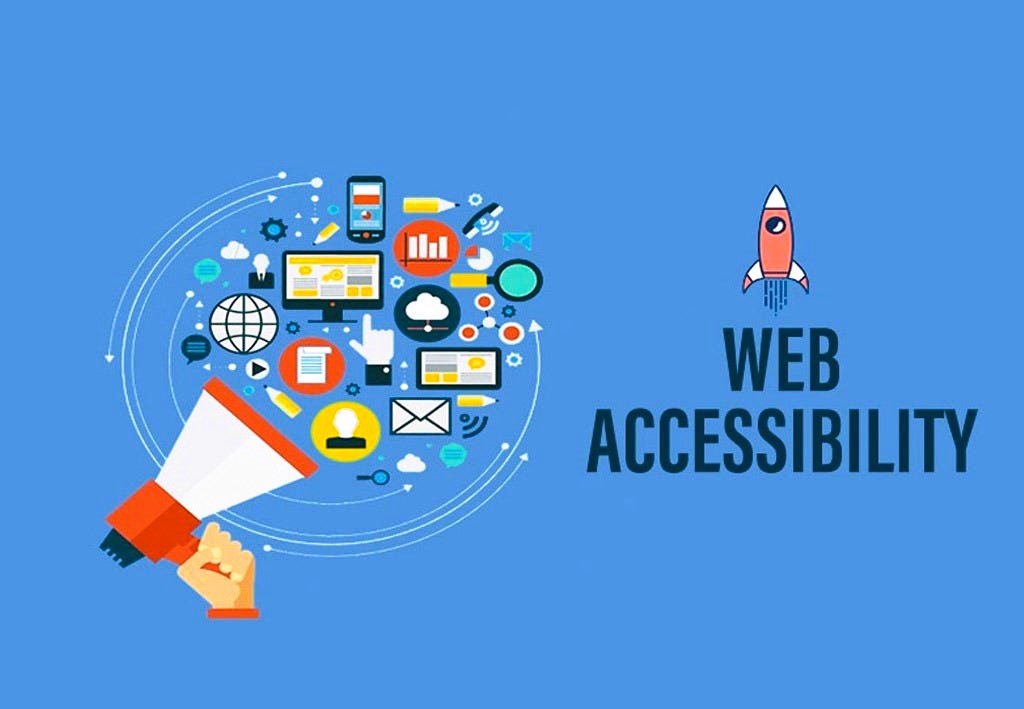In the digital age, accessibility has become a fundamental aspect of web design. Web accessibility ensures that people with disabilities can navigate and interact with websites, apps, and other digital platforms. Designing for all users, regardless of their abilities, is not only a legal requirement in many regions but also a crucial step towards creating an inclusive and user-friendly online environment.
Understanding Web Accessibility
Web accessibility refers to the practice of designing and developing websites and digital tools in a way that ensures they can be used by people of all abilities and disabilities. This includes individuals with visual, auditory, motor, and cognitive impairments. The goal is to eliminate barriers and provide equal access to information and functionalities.
Key Principles of Web Accessibility
- Perceivable: Information and user interface components must be presented in a way that users can perceive. This includes providing text alternatives for non-text content, captions for multimedia, and adaptable content for various display settings.
- Operable: Users should be able to interact with and navigate the website using a variety of input methods. This involves keyboard navigation, sufficient time for tasks, and avoiding content that may cause seizures or physical discomfort.
- Understandable: Information and operation of the user interface must be clear and straightforward. Users should be able to comprehend and operate the interface, with predictable navigation and input assistance.
- Robust: Content must be compatible with current and future technologies. This principle ensures that web content can be reliably interpreted by a wide variety of user agents, including assistive technologies.
Designing for Visual Impairments

- Alternative Text for Images: Providing descriptive alternative text for images allows screen readers to convey information to users with visual impairments.
- Contrast Ratio: Ensuring sufficient contrast between text and background improves readability for users with low vision. Aim for a contrast ratio of at least 4.5:1 for normal text.
- Font Size and Scalability: Use readable font sizes, and allow users to adjust the text size without loss of content or functionality. Avoid fixed font sizes that may cause issues for users with visual impairments.
- Semantic HTML: Using semantic HTML elements helps screen readers interpret content accurately. Properly structured headings, lists, and links contribute to a more accessible experience.
Designing for Auditory Impairments
- Closed Captions and Transcripts: Including closed captions for videos and transcripts for audio content ensures that users with hearing impairments can access the information.
- Clear and Consistent Navigation: Providing clear navigation and consistent design aids users who rely on visual cues rather than auditory information.
- Visual Alerts: Incorporate visual alerts alongside auditory alerts to notify users about important events or changes on the website. Learn the latest web design tools and software, learn more here.
Designing for Motor Impairments
- Keyboard Accessibility: Ensure that all functionality can be operated using a keyboard. This is crucial for users who may have difficulty using a mouse.
- Clickable Areas: Make interactive elements, such as buttons and links, large enough to be easily clicked or tapped by users with motor impairments.
- Time Allowance: Allow users sufficient time to complete tasks, and avoid time limits on critical actions to accommodate those with motor or cognitive impairments.
Designing for Cognitive Impairments
- Clear Language and Layout: Use clear and straightforward language, and organize content in a logical and easy-to-follow manner.
- Consistent Navigation: Maintain consistency in navigation and design elements throughout the website to reduce confusion for users with cognitive impairments.
- Predictable Interactions: Ensure that user interactions are predictable and that error messages provide clear guidance on how to correct mistakes.
Challenges and Benefits of Web Accessibility

While designing for web accessibility may present challenges, the benefits far outweigh the difficulties. Some challenges include the need for additional development time, testing efforts, and potential resistance to change. However, the advantages include:
- Expanded User Base: Designing for accessibility increases your potential audience by including individuals with disabilities.
- Improved SEO: Many accessibility practices align with search engine optimization (SEO) best practices, contributing to better search engine rankings.
- Enhanced Reputation: Demonstrating a commitment to inclusivity enhances the reputation of your brand or organization.
- Legal Compliance: Meeting web accessibility standards ensures compliance with various legal requirements, reducing the risk of lawsuits.
Conclusion
Web accessibility is not just a moral imperative; it is a legal requirement and a fundamental aspect of good design. Creating digital experiences that are inclusive and accessible to all users is essential for fostering an equitable online environment.
By following the key principles of web accessibility and adhering to established standards such as WCAG, designers and developers can contribute to a more inclusive digital landscape. Ensuring that websites are perceivable, operable, understandable, and robust will not only benefit users with disabilities but will also lead to improved user experiences for all.
For further exploration of web accessibility standards, you can refer to the Wikipedia page on Web Content Accessibility Guidelines (WCAG).
Designing for all users is a continuous journey, and as technology advances, it is essential to stay informed and proactive in creating digital experiences that leave no one behind.


